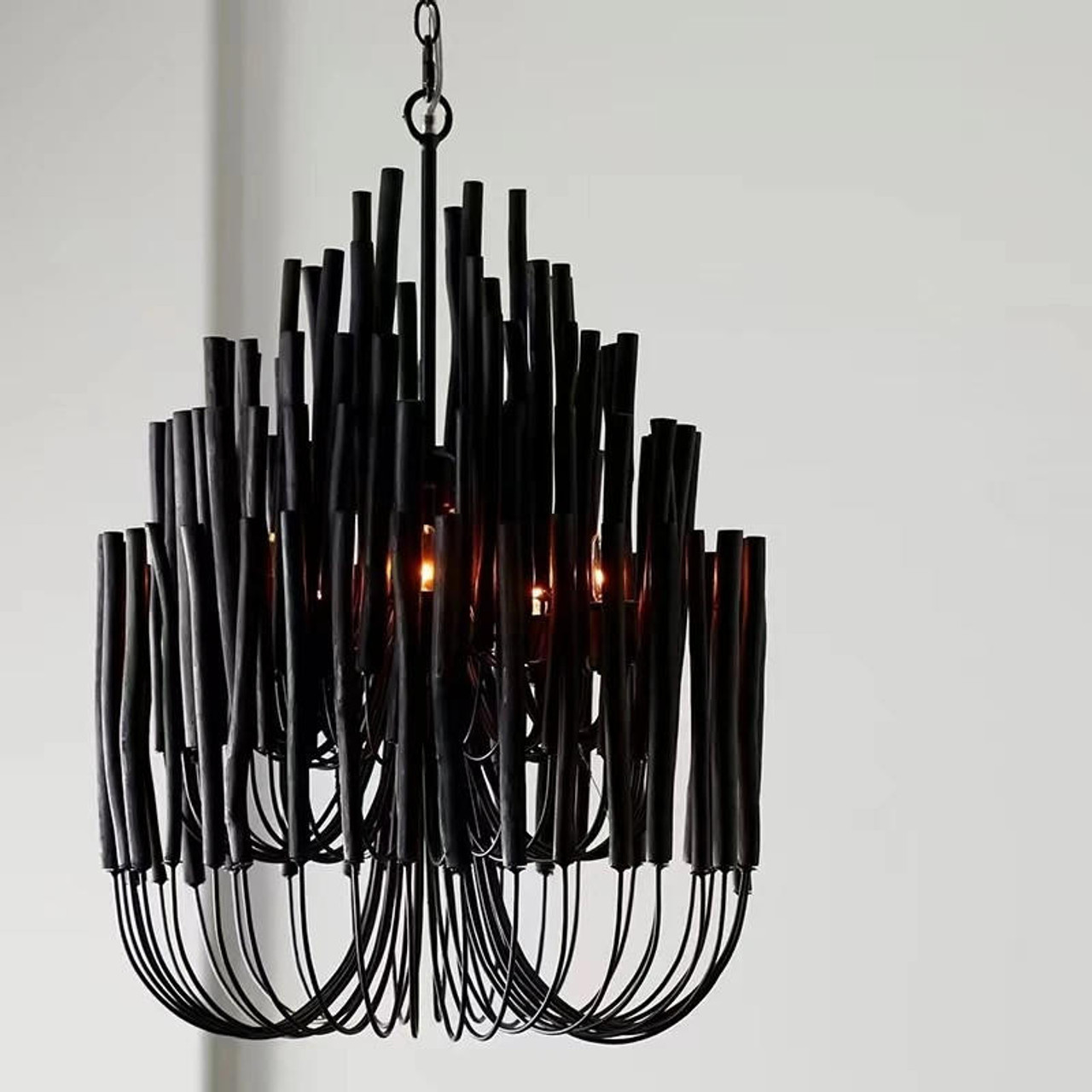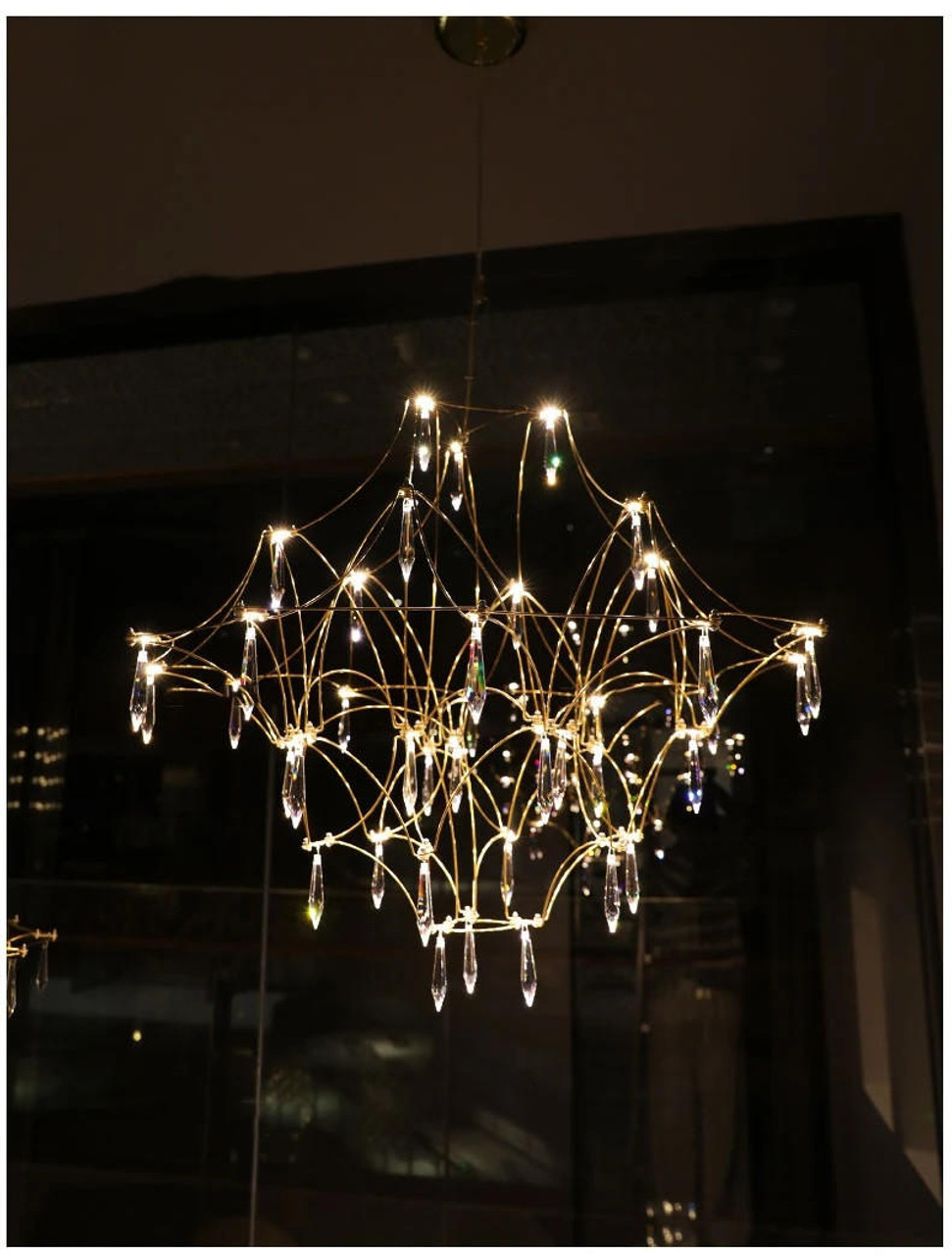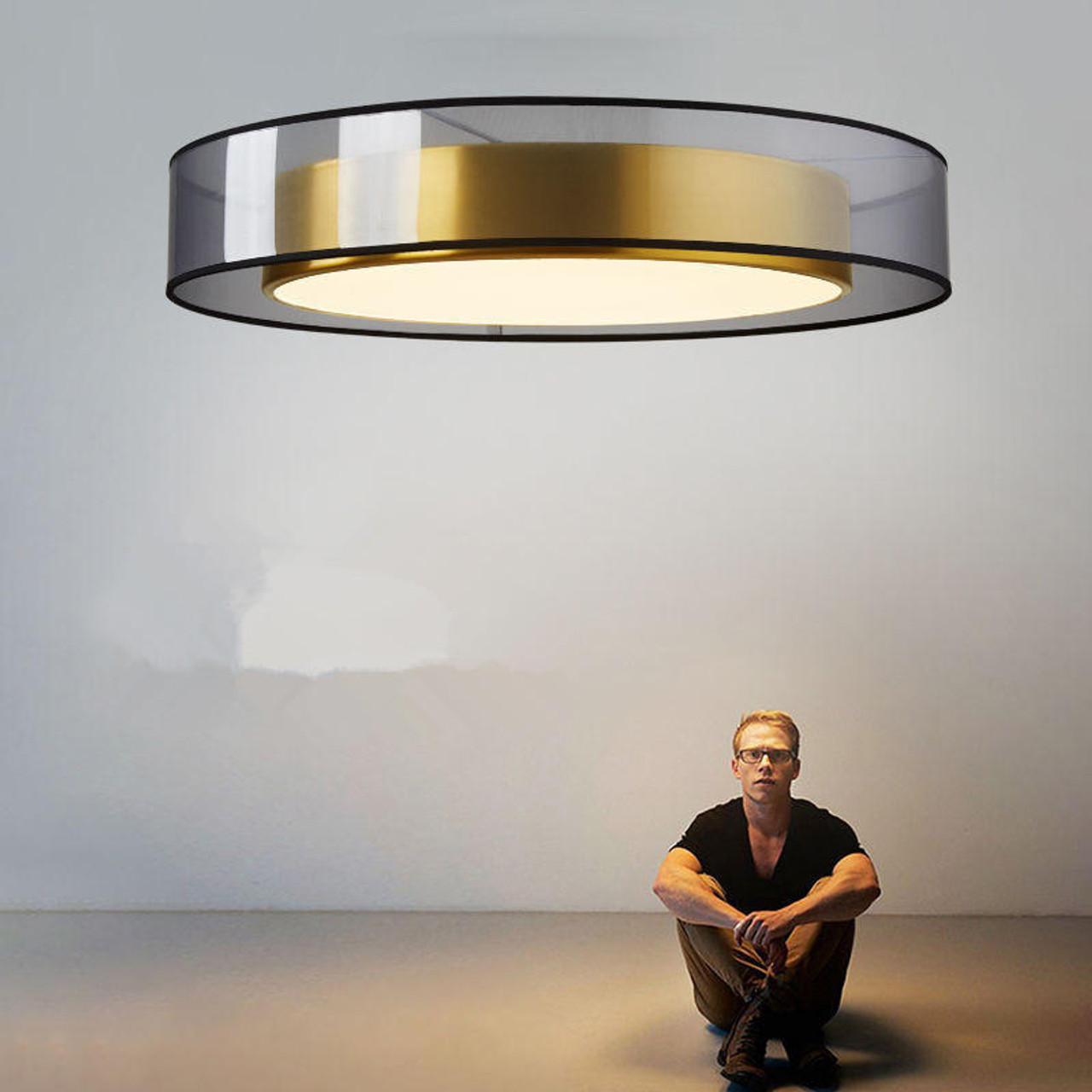Laura Ashley Chandeliers & Laura Ashley Ceiling Lights
25th Jul 2024
Laura Ashley Chandeliers: A Legacy of British High Street Fashion and Home Furnishings and Laura Ashley Ceiling Lights
Laura Ashley chandeliers, a quintessentially British brand, has left an indelible mark on the high street with its unique blend of fashion and home furnishings. Founded in 1953 by Laura and Bernard Ashley, the brand is renowned for its floral prints, vintage-inspired designs, and a romantic aesthetic that has captivated generations. This essay explores the history, rise, influence, challenges, and legacy of Laura Ashley, providing a comprehensive understanding of the brand that has become a household name.
Early Beginnings and Foundation
Laura Ashley was born Laura Mountney in Dowlais, Merthyr Tydfil, Wales, in 1925. Her creative journey began in the 1950s when she started designing headscarves, table mats, and napkins inspired by traditional Victorian patterns. Alongside her husband, Bernard Ashley, Laura used a rudimentary silk-screen printing process at their kitchen table in their small London flat. The couple's designs quickly gained popularity, leading to the establishment of the Laura Ashley brand in 1953.
Expansion and Growth
The 1960s and 1970s marked a period of significant expansion for Laura Ashley. The brand diversified from simple textiles to a broader range of products, including dresses, blouses, and skirts, which embodied a nostalgic charm and femininity. The company's move to a factory in Carno, Wales, facilitated this growth, allowing for increased production capacity.
Laura Ashley's distinct style resonated with the zeitgeist of the time, appealing to women who were drawn to its modest yet stylish clothing. The brand's success in fashion was mirrored in its home furnishings line, which included wallpaper, fabrics, and furniture, all featuring the signature Laura Ashley floral patterns and soft color palettes.
The Height of Popularity
By the 1980s, Laura Ashley had become a global phenomenon. The brand expanded internationally, opening stores across Europe, the United States, Japan, and Australia. The Laura Ashley lifestyle concept, which seamlessly integrated fashion and home decor, found a devoted following.
The Laura Ashley aesthetic became synonymous with a certain kind of British middle-class taste, characterized by its elegance, coziness, and timeless appeal. The brand's catalogs and showrooms provided a source of inspiration for countless households, making it easy for customers to envision and create harmonious living spaces.
Challenges and Changes
Despite its success, Laura Ashley faced numerous challenges over the years. The untimely death of Laura Ashley in 1985 was a significant blow to the company. Although the brand continued to thrive under Bernard's leadership and later, their son Nick Ashley, it struggled to maintain its original charm and appeal amid changing fashion trends and market dynamics.
The 1990s and 2000s were marked by financial difficulties and strategic missteps. The brand struggled to compete with fast fashion retailers and to modernize its offerings while retaining its core identity. Several ownership changes and management turnovers added to the instability. Despite these challenges, Laura Ashley remained a beloved brand, known for its quality and distinctive style.
Revival and Modernization
In recent years, efforts to revive and modernize Laura Ashley have been evident. The brand has sought to strike a balance between its heritage and contemporary fashion and interior design trends. Collaborations with modern designers and influencers have helped to refresh the brand's image and attract a younger audience.
Online retail has also played a crucial role in Laura Ashley's resurgence. By enhancing its digital presence and offering a seamless online shopping experience, the brand has been able to reach a broader audience and adapt to the changing retail landscape.
The COVID-19 Impact and Future Prospects
The COVID-19 pandemic dealt a severe blow to the retail industry, and Laura Ashley was no exception. In March 2020, the company filed for administration, citing the pandemic as a significant factor in its financial struggles. This move led to the closure of numerous stores and a significant restructuring of the business.
However, the brand's story did not end there. Investment firm Gordon Brothers acquired Laura Ashley's global brand, archives, and related intellectual property. This acquisition has paved the way for a potential revival, focusing on leveraging the brand's rich heritage while exploring new growth opportunities, particularly in digital and international markets.
Legacy and Cultural Impact
Laura Ashley's impact on British fashion and interior design cannot be overstated. The brand's romantic, vintage-inspired designs have left a lasting legacy, influencing numerous designers and home decor trends. The Laura Ashley look, characterized by floral prints, soft furnishings, and a cohesive aesthetic, continues to inspire and resonate with consumers worldwide.
The brand's commitment to quality and timeless style has ensured its place in the annals of British high street history. Even amid challenges and changes, Laura Ashley's ability to evoke a sense of nostalgia and comfort remains a powerful draw for its loyal customer base.
Conclusion
Laura Ashley is more than just a brand; it is a symbol of British elegance, creativity, and resilience. From its humble beginnings in a London flat to becoming a global icon, the brand has navigated the complexities of the fashion and home furnishings industry with a distinct identity and enduring appeal. As it looks towards the future, Laura Ashley's legacy of blending tradition with innovation offers a blueprint for navigating the ever-evolving retail landscape. Whether through its romantic dresses or cozy home furnishings, Laura Ashley continues to weave its story into the fabric of our lives, one floral print at a time.
Is Laura Ashley still in business?
Laura Ashley continues to operate but in a different capacity than its original high street presence. Here is an overview of the recent developments and current status of the brand:
Recent Developments
- Administration in 2020:
- In March 2020, Laura Ashley filed for administration due to financial difficulties exacerbated by the COVID-19 pandemic. This move led to the closure of numerous stores and the potential risk of the brand disappearing from the high street.
- Acquisition by Gordon Brothers:
- Shortly after entering administration, Laura Ashley's global brand, archives, and intellectual property were acquired by investment firm Gordon Brothers. This acquisition aimed to revive the brand by leveraging its rich heritage and exploring new growth opportunities, particularly in digital and international markets.
- Shift to Online and Licensing:
- Following the acquisition, Laura Ashley has focused on maintaining its presence through online sales and licensing agreements. This strategic pivot includes selling its products through various online platforms and partnering with other retailers to distribute Laura Ashley branded items.
- Partnership with Next:
- In 2021, Laura Ashley announced a partnership with the British retailer Next. Under this agreement, Laura Ashley homeware products are available through Next's online and in-store channels, ensuring the brand's continued presence in the UK market.
Current Status
As of now, Laura Ashley continues to operate primarily through online sales and licensing agreements. The brand has retained its focus on fashion and home furnishings, maintaining the classic designs and quality that made it famous. The partnership with Next has provided a stable platform for the brand's homeware products, while fashion items and other categories are available through various online channels.
Future Prospects
- Digital Expansion:
- The brand is likely to continue expanding its digital presence, leveraging e-commerce to reach a broader audience. This strategy aligns with broader retail trends where online shopping has become increasingly dominant.
- International Markets:
- There is potential for further expansion into international markets, utilizing licensing agreements and partnerships with local retailers to distribute Laura Ashley products globally.
- Product Line Diversification:
- Laura Ashley may explore diversifying its product lines to include new categories that align with current consumer trends, such as sustainable and eco-friendly products.
Conclusion
While Laura Ashley no longer operates as a standalone high street retailer, the brand continues to thrive through strategic partnerships and a strong online presence. The acquisition by Gordon Brothers and the partnership with Next have ensured that the iconic Laura Ashley designs remain accessible to consumers. The brand's future lies in adapting to the digital age and exploring new market opportunities while staying true to its heritage of timeless, elegant design.
Laura Ashley Chandeliers - Laura Ashley Ceiling lights
Laura Ashley sold chandeliers as part of its home furnishings range. The brand was well-known not only for its fashion and fabrics but also for its extensive collection of home decor items, which included lighting fixtures such as chandeliers. These chandeliers typically featured the brand's signature style, characterized by elegance, traditional design elements, and a touch of romanticism.
Characteristics of Laura Ashley Chandeliers
- Design Aesthetic:
- Laura Ashley chandeliers often featured classic and timeless designs, suitable for both traditional and contemporary interiors. They typically included elements such as crystal droplets, wrought iron frames, and delicate glass shades.
- The chandeliers were designed to complement the brand's broader home decor and furniture collections, ensuring a cohesive look when paired with Laura Ashley wallpapers, fabrics, and furniture.
- Materials and Quality:
- High-quality materials were used to craft Laura Ashley chandeliers. These included cut glass or crystal for the decorative elements, sturdy metal frames, and high-quality finishes.
- Attention to detail and craftsmanship were hallmarks of Laura Ashley lighting products, ensuring durability and a luxurious appearance.
- Range of Styles:
- The range included a variety of styles, from elaborate, multi-tiered chandeliers suited for grand spaces like dining rooms and entryways, to more modest, single-tier fixtures ideal for smaller rooms or bedrooms.
- Some chandeliers featured modern twists on classic designs, incorporating contemporary materials or simplified forms while maintaining an elegant aesthetic.
Popularity and Availability
- In-Store and Online Sales:
- Laura Ashley chandeliers were available both in their physical stores and through their online platform. This allowed customers to easily browse and purchase these lighting fixtures alongside other home furnishings.
- Part of Broader Collections:
- Often, these chandeliers were part of broader collections that included matching wall sconces, table lamps, and floor lamps. This allowed customers to create a harmonious lighting scheme throughout their homes.
Post-Administration Availability
Since administration and the subsequent restructuring of the brand, the availability of Laura Ashley chandeliers and Laura Ashley ceiling lights has primarily shifted to online platforms and through partnerships with other retailers like Next. While the physical Laura Ashley stores have largely closed, the brand continues to offer its lighting products, including chandeliers, through its website and through licensed retailers.
Conclusion
Laura Ashley chandeliers and Laura Ashley ceiling lights were a significant part of their home furnishings line, reflecting the brand's commitment to quality, style, and elegance. Despite the challenges the brand has faced, the legacy of Laura Ashley chandeliers continues through online sales and partnerships, ensuring that these beautiful lighting fixtures remain available to customers who appreciate the brand's distinctive aesthetic.







